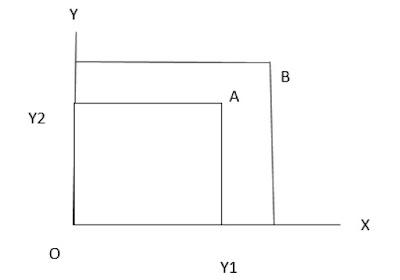Types of Product-Product relationship (Enterprise
relationship)
•Farm commodities bear
several relationship to one another. These basic product relationship are:
1. Joint products:
•Products that are
produced through single production process and the production of one without
another is not possible.
•These products are
obtained in fixed proportions.
•If a given quantity
of one product is produced, the quantity of other products is fixed by nature.
• Joint products are
produced through a single production function and for the purpose of analysis
they may be treated as single product.
•All farm commodities
are mostly joint products.
•E.g. wheat and straw,
groundnut and haulms, cotton seed and lint, cattle and manure, butter and milk
etc.
where, y1 and y2 are two joint products.
• 2. Complementary enterprises:
•when
change in level of production of one, another also changes in the same
direction. i.e. when resource held constant the increase in the level of output
of one product also increases in the level of another output.
•Two
products are complementary when increase in output of one product, using the
fixed resources, also increases the output of the second product.
•Example: Leguminous
crops increases the fertility status of soil, which is beneficial for
production of wheat on a piece of land, termed as complementary products.
where, y1 and y2 are two complementary products.
3. Supplementary enterprises:
•When increase or
decrease in the output of one product does not affect the production level of
the other product.
•Two products are
supplementary when an increase in output of one product, holding the resources
constant in quantity, has no effect on the level of output of the second
product.
• In other words, with
the same resources, the output of one product can be increased with neither a
gain nor a sacrifice in the other product.
•Supplementary
products use the idle resources.
•On small farms
keeping a few milk animals or poultry birds may be supplementary to the fodder
enterprises
where, y1 and y2 are two supplementary products.
4. Competitive enterprises:
•when
increase or decrease in the production of one product, with resource held
constant results in the decrease in the output of the other product.
•Two
products are competitive in the use of given resources if an increase in the
output of one product involves a reduction in the output of the other product.
Example: weed and rice competing in same field.
where, y1 and y2 are two competing products.






Comments
Post a Comment